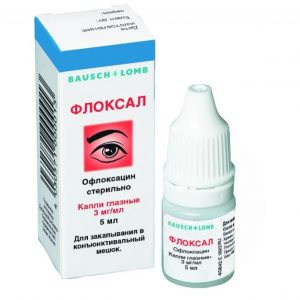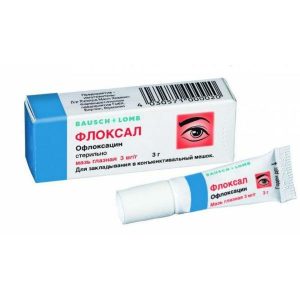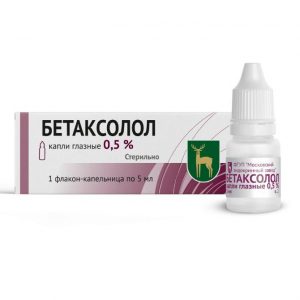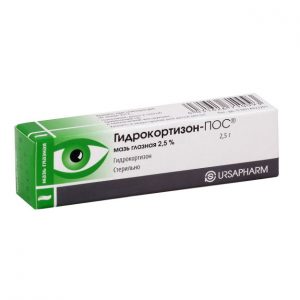Description
Latin name
Dancil
Release form
Eye and ear drops.
Packaging
5 ml – plastic dropper bottle (1) – packs of cardboard.
Pharmacological action
Antimicrobial agent of the broad-spectrum fluoroquinolone group. The bactericidal effect of ofloxacin is associated with the blockade of the DNA gyrase enzyme in bacterial cells.
Highly active against most gram-negative bacteria: Escherichia coli, Salmonella spp., Shigella spp., Proteus spp., Morganella morganii, Klebsiella spp. (including Klebsiella pneumoniae), Enterobacter spp., Serratia spp., Citrobacter spp., Yersinia spp., Providencia spp., Haemophilus influenzae, Neisseria gonorrhoeae, Neisseria meningitidis, Mycoplasma spp., Legionella pneumophila, Acinetobacter spp., As well as Chlamyd
Active against certain gram-positive microorganisms (including Staphylococcus spp., Streptococcus spp. / especially beta-hemolytic streptococci /).
Enterococcus faecalis, Streptococcus pneumoniae, Pseudomonas spp. are moderately sensitive to ofloxacin.
Anaerobic bacteria (except Bacteroides ureolyticus) are not sensitive to ofloxacin.
Resistant to -lactamase.
Pharmacokinetics
After oral administration, it is rapidly and completely absorbed from the digestive tract. Eating slightly affects the degree of absorption, but can slow its speed. Cmax in plasma is reached after 2 hours.
Protein binding – 25%. Ofloxacin is widely distributed in tissues and body fluids (organs of the urinary system, genitals, prostate gland, lungs, ENT organs, gall bladder, bones, skin).
Excreted in urine unchanged (about 80% in 24 hours). The concentration of ofloxacin in the urine was significantly higher than MPC90 for most microorganisms after taking the last dose (300 mg 2 times / day for 14 days). A small part of the active substance (about 4%) is excreted in the feces. T1 / 2 is 6 hours. In elderly patients with CC on average 50 ml / min, an increase in T1 / 2 to 13.3 hours is possible.
Indications
Infectious and inflammatory diseases caused by microorganisms sensitive to ofloxacin, including diseases of the lower respiratory tract, ear, throat, nose, skin, soft tissues, bones, joints, infectious and inflammatory diseases of the abdominal cavity ( with the exception of bacterial enteritis) and pelvic infections of the kidneys and urinary tract, prostatitis, gonorrhea.
Contraindications
Pregnancy, lactation, children and adolescents under 18 years of age, hypersensitivity to ofloxacin or other quinolone derivatives.
Use during pregnancy and lactation
Use during pregnancy is possible (including in the form of dosage forms for topical use), if the expected effect of therapy exceeds the potential risk to the fetus (adequate and strictly controlled studies of the safety of use in pregnant women have not been conducted).
Teratogenic effects. Ofloxacin did not have a teratogenic effect when administered to pregnant animals during organogenesis: rats at doses of more than 810 mg / kg / day, which is 11 times higher than MPDI when ingested and 9000 times when used in the form of eye drops for rabbits in doses over 160 mg / kg / day, which exceeds the MPDC by 4 and 1800 times, respectively. Doses equivalent to 50 and 10 mrdc when administered orally were fetotoxic – a decrease in fetal body mass and an increase in fetal mortality in rats and rabbits were observed.
FDA category of action on the fetus is C.
With a single dose of 200 mg ofloxacin in lactating women, its concentrations in breast milk are similar to those in plasma. Since potentially ofloxacin can cause serious adverse reactions in breast-fed infants, lactating women need to stop either breast-feeding or taking ofloxacin (given the importance of the drug to the mother).
Ingredients
active substance: ornithine aspartate 3 g
excipients: citric acid citric and orange flavoring sugar levitraf16 pefloraf10 sodium phosphate 10 pf106 Composition
Active ingredient: ofloxacin – 3 mg.
Excipients: benzalkonium chloride – 0.1 mg sodium chloride – 8 mg disodium edetate – 1 mg hypromellose – 2 mg sodium hydroxide – qs hydrochloric acid – qs water for injection – up to 1 ml.
Dosage and administration of
Infectious diseases of the eyes
Treatment of bacterial corneal ulcers. The recommended dose of ofloxacin for adults and children 1 year of age and older is 1-2 drops of a 0.3% solution in the affected eye (or both eyes) every 30 minutes during wakefulness, then 4 and 6 hours after falling asleep, during 2 days. Starting from the 3rd day of treatment and for the next 4-6 days, the solution can be instilled 1-2 drops every hour during wakefulness, then 1-2 drops 4 times a day for another 3 days or until clinical cure.
Treatment of conjunctivitis, blepharitis, keratoconjunctivitis, keratitis, meibomite, dacryocystitis and infection prevention in ophthalmic surgery after eye trauma and surgical procedures. Ofloxacin in the form of eye drops is usually used only during wakefulness. For adults and children aged 1 year and older, the recommended dose of ofloxacin is 1-2 drops 0, 3% solution into the affected eye (or both eyes) every 2 4 hours (while awake) for 2 days, then 1-2 drops 4 times a day for no more than 5 days.
Ear infections
Adults and children over 12 years old
Otitis externa – 10 drops in the affected ear 1 time per day for 10 days.
Chronic suppurative otitis media with chronic perforation of the tympanic membrane – 10 drops into the affected ear 2 times a day for 14 days.
Otitis with a tympanostomy tube installed – 5 drops in the affected ear 2 times a day for 10 days.
Children from 1 year to 11 years
The doctor must specifically prescribe the use of the drug and determine the dosage. All treatment should take place under his outpatient supervision.
Treatment of otitis externa and acute otitis media with an established tympanostomy tube. The recommended dose is 5 drops in the affected ear 3 times a day for 10 days.
Before installation, warm the bottle in your hand for 1-2 minutes to avoid the development of dizziness (possibly using a cold solution). The instillation is performed in the position of the patient lying on his side. After instillation, the patient should maintain this position for 5 minutes to facilitate the passage of the solution through the external auditory canal. If necessary, instillations in the other ear act in a similar way.
Side effects of the
From the digestive system: nausea, vomiting, diarrhea, abdominal pain and cramps, poor appetite, dry mouth, flatulence, gastrointestinal tract disorders, constipation rarely – liver dysfunction, liver necrosis, jaundice, hepatitis, perforation intestines, pseudomembranous colitis, gastrointestinal bleeding, disturbances in the oral mucosa, heartburn, increased activity of liver enzymes, including GGT and LDH, an increase in serum bilirubin level.
From the side of the central nervous system and peripheral nervous system: insomnia, dizziness, fatigue, drowsiness, nervousness rarely – cramps, anxiety, cognitive changes, depression, pathological dreams, euphoria, hallucinations, paresthesia, syncope, tremor, confusion, nystagmus, suicidal thoughts or attempts, disorientation, psychotic reactions, paranoia, phobia, agitation, aggressiveness, emotional lability, peripheral neuropathy, ataxia, impaired coordination, exacerbation of extrapyramidal disorders, speech impairment.
Allergic reactions: skin rash, itching rarely – angioedema, urticaria, vasculitis, allergic pneumonitis, anaphylactic shock, erythema multiforme, Stevens-Johnson syndrome, erythema nodosum, exfoliative dermatitis, toxic epidermal necrolysis, conjunctiva.
From the reproductive system: itching in the external genital area of women, vaginitis, vaginal discharge rarely – burning, irritation, pain and rash in the female genital area, dysmenorrhea, menorrhagia, metrorrhagia, vaginal candidiasis.
From the cardiovascular system: rarely – cardiac arrest, edema, arterial hypertension, arterial hypotension, palpitation, vasodilation, cerebral thrombosis, pulmonary edema, tachycardia.
From the urinary system: rarely – dysuria, increased urination, urinary retention, anuria, kidney stone polyuria, renal failure, nephritis, hematuria, albuminuria, candiduria.
From the musculoskeletal system: rarely – arthralgia, myalgia, tendonitis, muscle weakness, exacerbation of myasthenia gravis.
On the part of the metabolism: rarely thirst, weight loss, hyper- or hypoglycemia (especially in patients with diabetes, receiving insulin or oral hypoglycemic agents), acidosis, an increase in serum TG, cholesterol, potassium.
From the respiratory system: rarely – cough, nasal discharge, respiratory arrest, dyspnea, bronchospasm, stridor.
On the part of the sensory organs: rarely – hearing loss, tinnitus, diplopia, nystagmus, impaired visual clarity, impaired taste, smell, photophobia.
Dermatological reactions: rarely – photosensitization, hyperpigmentation, vesiculo-bullous rashes.
From the hemopoietic system: rarely – anemia, bleeding, pancytopenia, agranulocytosis, leukopenia, reversible inhibition of bone marrow hematopoiesis, thrombocytopenia, thrombocytopenic purpura, petechiae, ecchymosis, increased prothrombin time.
Other: chest pain, pharyngitis, fever, body pain rarely – asthenia, chills, general malaise, nosebleeds, sweating.
º °Ñ ÑÑ ² ½ ½ ¾ ² · ° ¸ ¼ ¾ ´ ¹ÑÑ ² ¸
Ñ ¸ ¾ ´ ½ ¾ ²Ñ ¼ ½ ½ ¾ ¼ ¿Ñ ¸ ¼ ½ ½ ¸ ¸ Ñ ° ½Ñ °Ñ ¸ ´ ° ¼ ¸, Ñ ¾ ´ Ñ ¶ °Ñ ¸ ¼ ¸ º ° »ÑÑ ¸ ¹, ¼ ° ³ ½ ¸ ¹ ¸ » ¸ ° »Ñ ¼ ¸ ½ ¸ ¹, Ñ ÑÑ ºÑ ° »ÑÑ °Ñ ¾ ¼, Ñ ¿Ñ ¿ °Ñ °Ñ ° ¼ ¸, Ñ ¾ ´ Ñ ¶ °Ñ ¸ ¼ ¸ ´ ²ÑÑ - ¸ Ñ Ñ Ñ ² ° » ½Ñ ½ º °Ñ ¸ ¾ ½ , Ñ ° º ¸ ¼ ¸ º ° º ¶ » · ¾, ¸ » ¸ Ñ ¼Ñ »ÑÑ ¸ ² ¸Ñ ° ¼ ¸ ½ ° ¼ ¸, Ñ ¾ ´ Ñ ¶ °Ñ ¸ ¼ ¸ Ñ ¸ ½ º, ² ¾ · ¼ ¾ ¶ ½ ¾ ½ °Ñ ÑÑ ½ ¸ ° ±Ñ ¾Ñ ±Ñ ¸ ¸ Ñ ¸ ½ ¾ » ¾ ½ ¾ ², ¿Ñ ¸ ² ¾ ´ÑÑ º Ñ ¼ ½ÑÑ ½ ¸Ñ ¸Ñ º ¾ ½Ñ ½Ñ Ñ °Ñ ¸ ¸ ² ¾Ñ ³ ° ½ ¸ · ¼ . Ñ ¸ ¿Ñ ¿ °Ñ °Ñ ½ Ñ » ´Ñ Ñ ¿Ñ ¸ ¼ ½ÑÑ Ñ ² Ñ Ñ ½ ¸ 2 Ñ ´ ¾ ¸ » ¸ ² Ñ Ñ ½ ¸ 2 Ñ ¿ ¾Ñ » ¿Ñ ¸ ¼ ° ¾Ñ » ¾ ºÑ °Ñ ¸ ½ °.
Ñ ¸ ¾ ´ ½ ¾ ²Ñ ¼ ½ ½ ¾ ¼ ¿Ñ ¸ ¼ ½ ½ ¸ ¸ ¾Ñ » ¾ ºÑ °Ñ ¸ ½ ° ¸ ¡ ¿ ¾ ² Ñ ° Ñ ÑÑ Ñ ¸Ñ º Ñ ° · ² ¸Ñ ¸Ñ ÑÑ ¸ ¼Ñ » ¸Ñ ÑÑÑ ³ ¾ ´ ¹ÑÑ ² ¸Ñ ½ ° ¦ ¡ ¸ ÑÑ ´ ¾Ñ ¾ ³.
Ñ ¸ ¾ ´ ½ ¾ ²Ñ ¼ ½ ½ ¾ ¼ ¿Ñ ¸ ¼ ½ ½ ¸ ¸ Ñ Ñ ¾Ñ ¸ » » ¸ ½ ¾ ¼ ² ¾ · ¼ ¾ ¶ ½ ¾ ¿ ¾ ² Ñ ½ ¸ ³ ¾ º ¾ ½Ñ ½Ñ Ñ °Ñ ¸ ¸ ² ¿ » ° · ¼ ºÑ ¾ ² ¸ ( ² Ñ .Ñ. ² Ñ ° ² ½ ¾ ² Ñ ½ ¾ ¼ Ñ ¾ÑÑ ¾Ñ ½ ¸ ¸), Ñ ² » ¸Ñ ½ ¸ ¿ Ñ ¸ ¾ ´ ° ¿ ¾ »Ñ ² ² ´ ½ ¸Ñ. Ñ ¾ ¿ ¾ ² Ñ ° Ñ Ñ ¸Ñ º Ñ ° · ² ¸Ñ ¸Ñ ¿ ¾ ± ¾Ñ ½ Ñ Ñ ° ºÑ ¸ ¹, Ñ ²Ñ · ° ½ ½ Ñ Ñ ´ ¹ÑÑ ² ¸ ¼ Ñ ¾Ñ ¸ » » ¸ ½ °.
Ñ ¸ ¾ ´ ½ ¾ ²Ñ ¼ ½ ½ ¾ ¼ ¿Ñ ¸ ¼ ½ ½ ¸ ¸ ¾Ñ » ¾ ºÑ °Ñ ¸ ½ ° Ñ ± Ñ °- » ° ºÑ ° ¼ ½ ¼ ¸ ° ½Ñ ¸ ± ¸ ¾Ñ ¸ º ° ¼ ¸, ° ¼ ¸ ½ ¾ ³ » ¸ º ¾ · ¸ ´ ° ¼ ¸ ¸ ¼ Ñ Ñ ¾ ½ ¸ ´ ° · ¾ » ¾ ¼ ¾Ñ ¼ Ñ ½ ¾ ° ´ ´ ¸Ñ ¸ ² ½ ¾ ² · ° ¸ ¼ ¾ ´ ¹ÑÑ ² ¸ .
Overdose
After topical administration of an overdose of Danzil, eyes should be rinsed with clean room temperature water. There are no systemic manifestations of overdose.
Storage conditions
In the dark place at a temperature of no higher than 25 ° C (do not freeze).
Expiration
2 years. After the autopsy – 1 month.
dosage form
dosage form
eye drops




